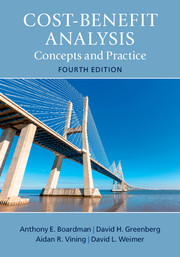Chapter 15 - Contingent Valuation: Using Surveys to Elicit Information About Costs and Benefits
from PART III - VALUATION OF IMPACTS
Summary
Economists generally are more comfortable observing individuals’ valuations of goods and services through their behavior in markets than eliciting their valuations through survey questionnaires. They prefer to observe purchasing decisions because these decisions directly reveal preferences, whereas surveys elicit statements about preferences. Nevertheless, for some public goods there are simply no, or very poor, market proxies or other means of inferring preferences from observations. In such circumstances, many analysts have concluded that there is no viable alternative to asking a sample of people about their valuations.
Questionnaires designed to elicit preferences are normally referred to as contingent valuation (CV) surveys, or sometimes hypothetical valuation surveys, because respondents are not actually required to pay their stated valuations of goods. The primary use of CV is to elicit people's willingness to pay (WTP) for changes in quantities or qualities of goods. Many kinds of goods, including water quality at recreation sites, goose hunting, sports stadiums, and outdoor recreation, have been valued with CV surveys, as have health outcomes. Such agencies as the National Park Service and the U. S. Bureau of Reclamation use CV surveys to value recreation and wildlife opportunities. CV surveys are also used to value more complex and abstract goods, such as reductions in the volume of hazardous wastes, the value of archeological artifacts and sites, and the preservation of wetland ecosystems. Valuing the use, or potential use, of goods with CV is relatively uncontroversial. Valuing passive use (nonuse) with CV is more controversial, both for the conceptual reasons discussed in Chapter 9 and the practical reasons related to gathering valid information from surveys discussed later in this chapter.
In spite of the controversy, the use of CV as a method for estimating costs and benefits is now widespread. Indeed, the federal courts have held that surveys of citizens’ valuations have “rebuttable presumption” status in cases involving the assessment of damage to natural resources. A blue-ribbon panel of social scientists convened by the National Oceanic and Atmospheric Administration (NOAA) further legitimized the use of CV by concluding that it could be the basis for estimating passive use values for inclusion in natural resource damage assessment cases.
- Type
- Chapter
- Information
- Cost-Benefit Analysis , pp. 372 - 405Publisher: Cambridge University PressPrint publication year: 2017



